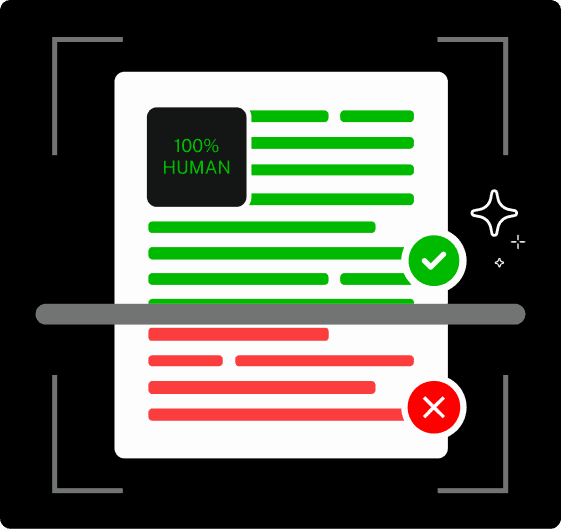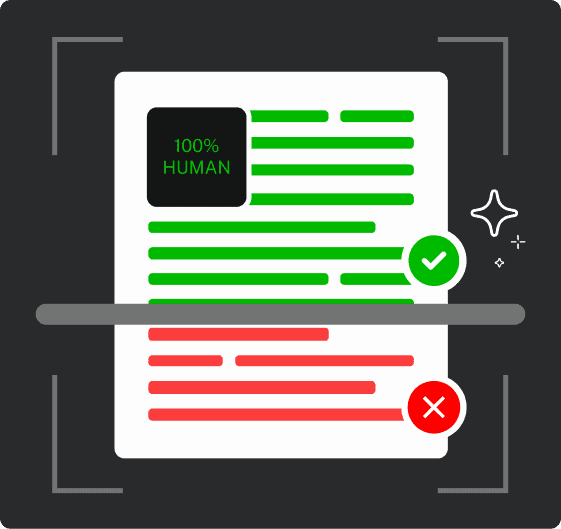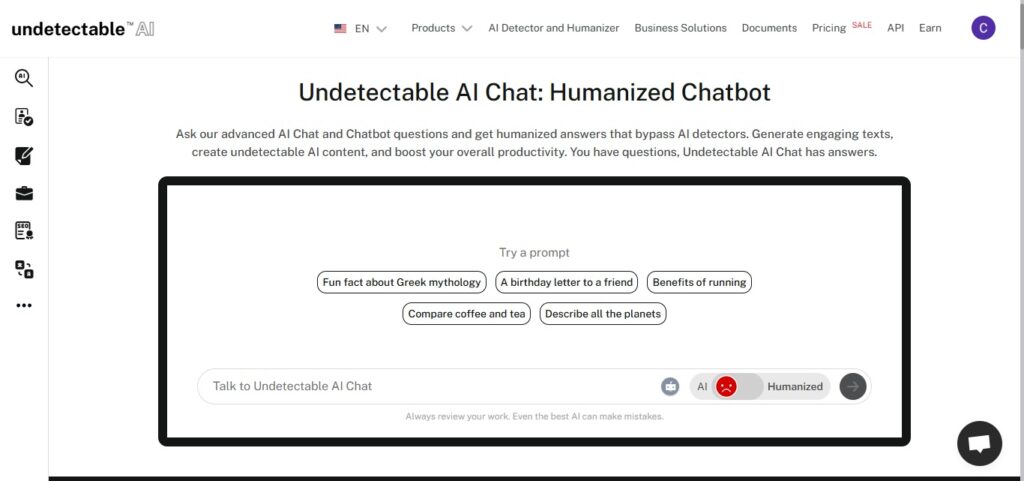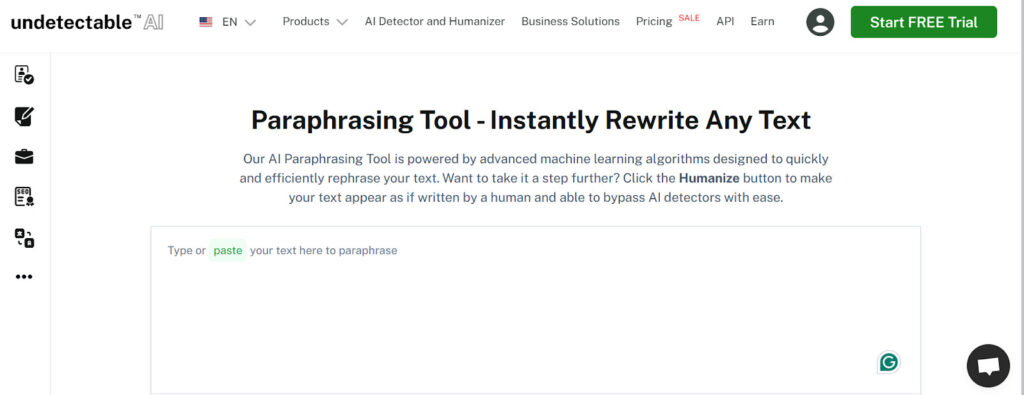Have you ever had to summarize a long article and experienced difficulty? You are not alone.
As a student looking to study more effectively, a professional preparing a quick report, or a content creator looking to repurpose material, knowing how to summarize an article is an extremely useful skill.
Summarizing an article does not have to be difficult or time-consuming if you follow our 5-step summary guide below.
We will walk you through how to summarize an article in simple steps that even beginners can understand, and how to get AI to summarize an article for you.
Key Takeaways:
The following highlights the key steps involved in summarizing an article:
- When summarizing, your audience must get the main point of the writing without unnecessary information.
- A good summary simply mentions the main points and doesn’t include any personal thoughts or views.
- Before summarizing, full comprehension is necessary.
- To avoid copying, make sure everything is clear and write the summaries in your own words.
Following our guide, one step at a time saves time and makes summarizing easy.
What Is an Article Summary?
An article summary is a shortened version of an author’s work with more focus on the most important details, main arguments, and overall message without the need to repeat every single detail mentioned in the original piece.
The goal is to provide readers with a quick but true idea about the content of an article so that they can grasp its intention without reading it all.
It’s just like reading the back of a book. You don’t get to know everything, but it provides enough information to know what the whole book is about.


Never Worry About AI Detecting Your Texts Again. Undetectable AI Can Help You:
- Make your AI assisted writing appear human-like.
- Bypass all major AI detection tools with just one click.
- Use AI safely and confidently in school and work.
It is like an abstract in research papers, which allows students to get access to research papers or journal articles key points sooner.
They are used in industries to enable quick understanding of important information or findings.
Summarizing allows content developers turn lengthy pieces of content into brief ones to use them on different platforms.
A well-written summary should be:
- Concise: it must eliminate unnecessary details.
- Accurate: Reflects the original tone and meaning
- Objective: Avoids personal judgments and perceptions.
Easy Steps to Summarize an Article Effectively
Here is a step-by-step guide on how to summarize an article effectively;
Step 1: Read the Article Carefully
Before you even think about summarizing, you should read the whole article.
You need to fully comprehend the original in order to create a good summary.
You can’t shorten what you don’t fully understand.
To get the key idea in an article, you will need to read the article over and over again.
After you’ve done this and you are sure you have gotten the holistic picture, then you can start underlining or highlighting the key sentences in the body of the article.
The goal here is to get a sense of the whole article.
You’ll be able to write a concise and correct summary of the content after you get the full idea.
Step 2: Identify the Main Idea and Purpose
In this step, you have finished reading the piece, so let’s move towards discovering the main concept that the author is trying to convey.
As suggested earlier, the primary focus can be located in most cases in the body of the writing.
That is not always true, though (we will speak more on that later on), like in news articles, editorials, opinion pieces, and blogs.
It is up to you to remember where exactly matters.
To begin, ask yourself:
- What’s the point of this piece?
- What does the author want me to remember most?
- What is the author’s intention? To explain, teach, or convince?
In many cases, the article title will contain a key point from the article; in some cases, key points of the article will be in the first paragraph or the last paragraph of the article.
The body of the article will normally state or imply stories, facts, or examples to support a certain point.
For example, the main idea of a summary of a lifestyle article called “5 Ways to Sleep Better Without Changing Your Schedule” could be: “You can be a better sleeper if you make other changes to your sleep-life, like changing the time you go to bed.”
However, if you’ve done all this and you still cannot find the main idea in a piece of writing, our Undetectable AI Chat can aid you in determining a better, clearer picture.
Our tool can read any article and find the essential point in very little time.
This saves you time, especially when you have to deal with longer or complex materials. In case you are wondering how to ask ChatGPT to summarize an article for you, this is one of the best ways.

Step 3: Pick Out Key Points and Supporting Evidence
When you are sure that you have gotten a full grasp of the key idea in an article, you can proceed to look for the key supporting evidence that gives life to the main point.
Remember that what we are referring to here are the “why” or “how” behind the message the article is passing across.
These are the pieces of information which can be facts, examples, short stories, or statistics that documents utilize in order to justify their argument.
Don’t forget that you’re not generating an explanation for every single detail discussed in the article. So, two to four important details that resonate with the main idea should suffice.
Let’s assume we are summarizing a health article recommending increased water consumption; some key supporting statements could include improvement in digestion, increased energy levels, and enhanced skin appearance.
You should also pay attention to the most important examples in the article, especially the examples that the author explains in more detail than usual.
Most times, this means that the example is quite important.
With this step, your summary will feel full without giving the reader too much information. Just enough to give an explanation of “why” the main point is correct.
Step 4: Rewrite in Your Own Words
Now that you know of the key ideas as well as the supporting facts, it is time to put everything into your own words.
This is the most important aspect of summarizing. Here, you don’t attempt to replicate the whole work; you don’t just swap a few words in an attempt to change the sentences.
Instead of just copying 99 percent of the article, state your understanding of what you lifted from the article as if you are telling a friend the highlights.
Use only key points and your own words. Try as much as possible to avoid using the same words or style as the original author.
This is where a lot of people get stuck, but not to worry, our AI Paraphraser can help out.
Using our AI Paraphraser, you can quickly change long words or sentences without losing their meaning.
It works well for articles, reports at work, blog posts, and professional recaps where tone and clarity are important.

In case you are wondering how to get ChatGPT to summarize an article for you, our Undetectable AI tool has got you covered.
Step 5: Keep It Concise and Objective
This is the stage where summarizing comes into play.
All the information gathered needs to be condensed into a short and labeled “objective”, so always make sure to input only the essentials alongside your primary message.
Avoid adding personal commentary because it distorts the evidence presented in the piece of writing. Consider the intentions of the article, rather than what you think it is saying.
Don’t give your opinion, simply state the facts.
You want your summary to be as clear and useful as possible? Check out our AI Word counter, a great tool for keeping track of your writing as you write it.
It’s great because it helps you stay within your targeted word count.
If you are trying to summarize an article to 100 words or 200 words long without losing the continuity or balance of your summary, this tool is your best bet.

You can think of a summary as a condensed version of the entire piece.
An effective summary will have a condensed version; clear, concise, and easy to understand.
Step 6: Review for Clarity and Accuracy
Proofreading after drafting a summary is crucial as it reduces the chances for wrong grammar to go unnoticed, such as mentioning ‘a finish’ instead of concluding, or any other phrases that require clarity on just about everything said or further stated within the article.
Ask yourself these questions when going through your writing;
- Does the summary show what the main idea of the article is?
- Are all of the supporting points correct?
- Does the summary pass the “Is it easy to read and understand” criteria?
Summaries produced by AI or paraphrasing tools might create an impression of sounding too formal or algorithmic, which is why this touch-up phase becomes important.
Our AI Humanizer can help you make your report sound more natural, smooth, and interesting. It gets rid of any robotic tone and makes your writing sound real.
After using our undetectable AI humanizer, you can be rest assured your article won’t get flagged by any AI detector.
Tips to Avoid Plagiarism
When summarizing, many may find it difficult to avoid mimicking the original author’s tone or style.
This is particularly true when an individual attempts to use illustrative phrases or sentences from the piece.
For this reason, a safe approach is to pay particular attention to writing an original summary to avoid plagiarism.
Below are tips to help you avoid plagiarism:
- Rewrite based on your understanding of the topic rather than copying and pasting
- Instead of trying to change words in a sentence while paraphrasing, it’s better to write out the whole sentence afresh from your understanding.
- Rather than quoting the author verbatim, when writing summaries, you should attempt to clarify in fewer words the points made by the author.
- When writing, make use of your own writing style and tone; don’t try to imitate the writer’s style
Before submitting your summary, you should run your summary through our AI Plagiarism Checker.
It quickly reads your content and identifies any sections that are too similar to the original or sections that may be flagged as plagiarism.
Examples of Good and Bad Summaries
Enough of the talk, let’s do a little hands-on demonstration on how to summarize an article example. Below, you will find a sample of both a good and a bad summary of the same article.
Example:
How the Modern Workplace is Evolving Due to Remote Work.
Working from home has drastically altered office operations. Employees have greater flexibility, while companies are considering downsizing their corporate headquarters.
Using a home office allows employees to avoid long commutes but makes them more susceptible to isolation, collaboration, and communication obstacles as well as burnout.
Most businesses are also changing their cultures and adopting modernization by investing in digital technologies, providing mental health services, and flexible hybrid scheduling.
Bad Summary
The essay talks about remote work and how it is different now.
It mentions several issues and claims that companies are doing things to fix them.
Here are reasons why this is a bad summary;
- It’s Unclear: “The article talks about Remote work” tells us nothing new. What exactly is it saying?
- It Skips the Main Points: There’s no talk of flexibility, digital tools, hybrid models, or burnout. All the good stuff is missing!
- Use of Meaningless Phrases: “Doing things to fix them” is unclear and ineffective. What things? What problems?
- Lack of Structure: There is no obvious beginning, middle, or end. It just feels like someone scrawled a basic idea.
- It Does not Stand on its Own: If you hadn’t read the piece, you’d have no idea what it was all about.
Good Summary
The article discussed how working remotely is changing the way we work as businesses.
There are some obvious pros to remote working that were discussed, flexibility, decreased costs, and there are some obvious cons of remote work, communication and potentially burnout among employees.
In finding out how to manage those drawbacks, companies are utilizing new hybrid business models, technology for digital collaboration, and a new emphasis on employees’ health and wellness.
Here’s why this is a good example of a summary;
- It is Straightforward: The essay immediately makes it clear that it is about how remote work is altering the modern office.
- Contains the Major Ideas: Flexibility, cost reductions, communication issues, burnout, and company strategies are all beautifully packaged together.
- Sounds Original: The writer definitely understood the content and rewrote it using their own words. No sloppy copying here.
- It Provides Value: Even if the original article is never opened, this summary tells everything that there is in the picture, devoid of unnecessary information.
- Flow: It maintains harmony throughout, which enhances comprehension and retention.
Conclusion
Summarizing involves thoughtful shortening and extraction of the core idea from the source.
Every summary has its own goals, and meeting them should be accomplished by understanding the article in detail.
Read carefully, locate relevant high points, write in your own words, and rephrase with precision!
You can always use our AI Paraphraser, Word Counter, and AI Humanizer to support making the summaries 100% unique, accurate, and easy to read.
With this, you can turn long stories into clear, useful summaries over and over again.
